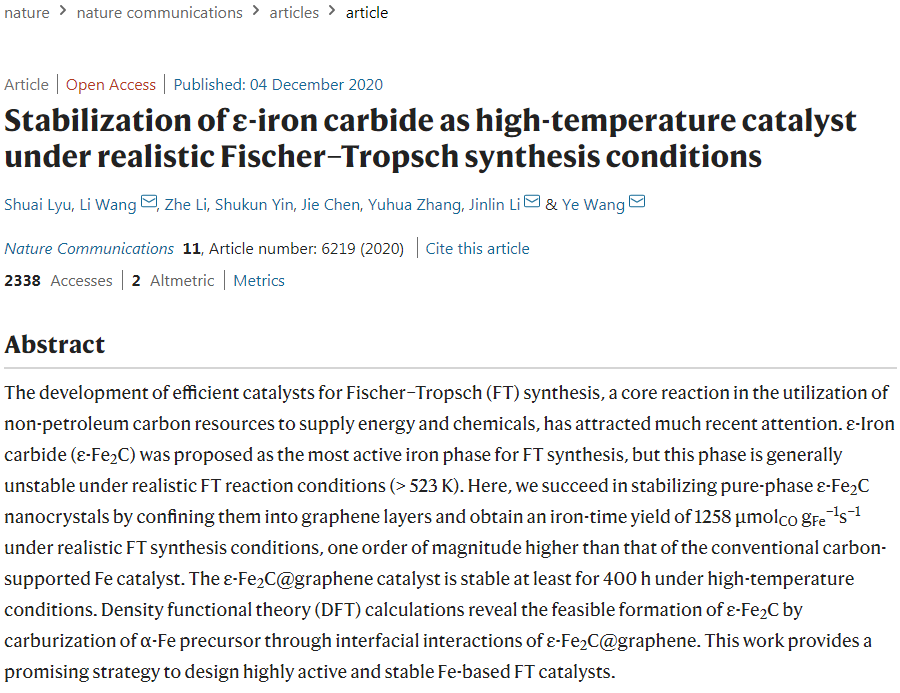Prof. Wang and Li's paper, 'Stabilization of ε-iron carbide as high-temperature catalyst under realistic Fischer-Tropsch synthesis conditions' has been published at Nature Communications. It is the first time that our university as the first communication unit has ever published at this top journal. Congratulations! Related link: https://www.nature.com/articles/s41467-020-20068-5 Fischer-Tropsch synthesis technology is one of the best ways to convert coal, natural gas and biomass into clean liquid fuel and high value-added chemicals.Iron based catalysts are widely used in industrial Fischer-Tropsch synthesis because of their low cost, suitable for different hydrogen carbon ratios and reaction conditions of syngas, and because they can produce low-carbon olefins and high value-added oxygen-containing compounds. ε-Fe2C is the most active phase in iron-based catalysts, but it is difficult to keep stable at high temperature. How to obtain high-temperature stable ε-Fe2C catalyst and reveal its structure-activity relationship in industrial Fischer-Tropsch synthesis reaction is of great significance to theoretical research and industrial application. The research of Professor Li and Associate Professor Wang provided an effective method for elucidating the structure-activity relationship of iron-based catalyst and developing industrial iron-based Fischer-Tropsch synthesis catalyst with high activity and high stability. Since 2014, the team have carried out the research on the active phase control of iron-based Fischer-Tropsch synthesis catalyst.After years of hard work, they have successfully designed and synthesized a graphene encapsulated confined ε-Fe2C nano material. This nano material has excellent activity and stability under industrial Fischer-Tropsch synthesis conditions, and is the highest activity iron-based Fischer Tropsch synthesis catalyst reported in literature. Further studies show that the ε-Fe2C phase in the nanomaterials can maintain stable existence at high temperature. Experimental and quantum chemical theoretical calculations show that graphene coating helps to inhibit the phase transition and carbon deposition of ε-Fe2C at high temperature. This research is supported by the key project of petrochemicals joint fund of NSFC, general program of NSFC and major science and technology innovation program of Hubei Province.


|